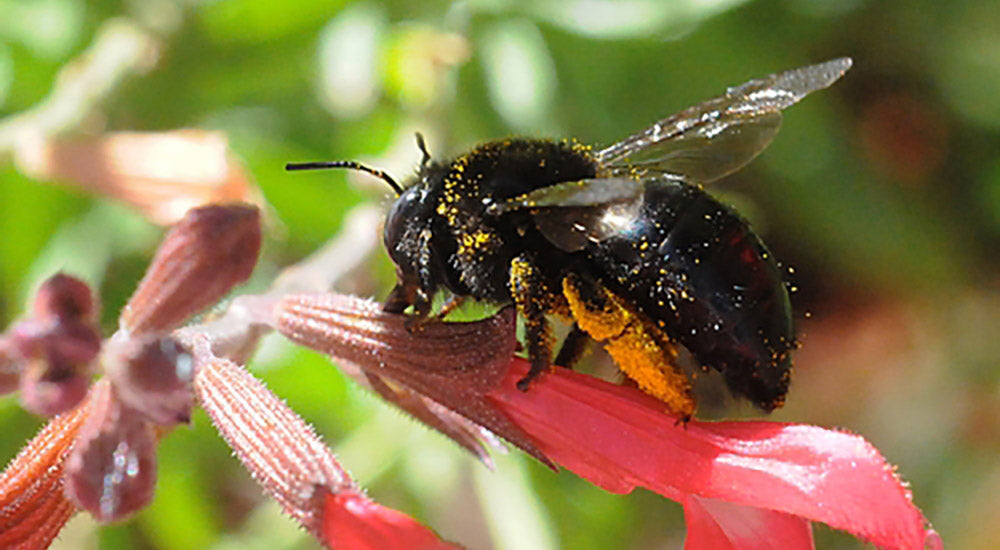The Declining Honey Bee Population and Giving Back
As many already know, the honey bee population is in jeopardy. Here at Best Bee Brothers, LLC, we understand the importance of bees to the existence of agriculture and to human life.
No other single creature plays a more significant role in the production of fruits and vegetables than the honey bee. In fact, it is estimated honey bees support about $20 billion worth of crop production in the U.S. annually.1 These tiny but mighty creatures are responsible for one-third of all the food we currently enjoy.2
Between April 1, 2018, and April 1, 2019, 40.7% of the managed honey bee population – colonies kept by commercial beekeepers – declined.1
Why Are Honey Bees Dying?
There are many reasons that are collectively contributing to honey bee’s disappearing:
- Heavy use of pesticides
- Decreasing crop diversity
- Parasites
- Specifically, varroosis is a disease caused by the Varroa destructor, a parasitic mite that attacks and feeds on honey bees. The mite attaches itself to the bee and weakens it by sucking fat bodies.
- Long cold winters
- Honey bees will keep the inside temperature of the winter cluster at about 95 degrees by shivering and expending energy. When a honey bee’s body temperature drops below 41 degrees, the bee can’t operate or flex its shivering muscles to stay warm. Windchill is the single most harmful factor that results in bee deaths in cold climates.
- Habitat loss
- Clearing land for farming, development and more decreases bees’ natural habitat.
- Poor management
- Honey bees are transported all over the country in semitrucks to pollinate commercial crops. While the exact cause is unknown, researchers hypothesize the changes in barometric pressure, humidity, turbulent airflow, diesel exhaust, and vibration are potential reasons for the loss of honey bees. 3
- Bee Colony collapse disorder (CCD)
- The colony collapse disorder phenomenon is caused when most worker bees in a colony disappear, leaving behind a queen, plentiful food and some nurse bees to care for the remaining immature bees and the queen.4

Photo Credit: BBC.com
How Do Carpenter Bees Affect Honey Bees?
According to research conducted by Environmental Entomology, the presence of carpenter bees actually hurts honey bees’ ability to properly pollinate. How? The carpenter bee acts as a nectar thief.
Usually, nectar thieves feed via holes bitten in flowers rather than by entering through the flowers' natural openings. Worse, the thieves’ removal of floral nectar decreases the standing crop and in some cases changes the sugar concentration of nectar available to other pollinators, such as honey bees.4

Photo Credit: University of California Agriculture and Natural Resources (ucanr.edu)
5 Ways You Can Help Save the Bees
Understanding WHY honey bees are in jeopardy is the first thing. From there, we need to be cautious of our actions to avoid endangering honey bees and other pollinators. Here are a few things you can do:

Photo Credit: Backyardboss.net
- Reduce pesticide use
- While commercial farming plays the largest role in pesticide use, significantly limiting the use of pesticides in your yard and garden will make a difference. Instead, use compost to aid soil health.
- If pesticides are unavoidable, read and follow labels. The EPA requires pesticides that are known to be harmful to bees to include instructions for protecting bees on their labels.5
- Plant a tree
- Did you know that bees get most of their nectar from trees? When a tree blooms, it provides hundreds – if not thousands – of blossoms to feed on.
- Build or install a home for bees
- 70% of bees are solitary and live inside of trees or hollow stems. The other 30%, like honey bees, live underground.
- A bee lodge allows solitary bees, like mason bees, to take up residence.
- Provide a safe haven for honey bees by leaving an untouched plot of land for them in your garden.
- Plant a bee garden
- Create a safe habitat for the bees in your area. It doesn’t have to be big, even flower pots are beneficial.
- Julia Jacobo, “Nearly 40% Decline in Honey Bee Population Last Winter ‘Unsustainable,’ Experts Say,” ABC News, July 9, 2019, https://abcnews.go.com/US/40-decline-honey-bee-population-winter-unsustainable-experts/story?id=64191609.
- Aylin Woodward, “Last Year, 40% of Honey-Bee Colonies in the US Died. But Bees Aren’t the Only Insects Disappearing in Unprecedented Numbers,” Business Insider, June 21, 2019, https://www.businessinsider.com/insects-dying-off-sign-of-6th-mass-extinction-2019-2.
- Dacotah Melicher, “Road Trip: How Hive Transportation Puts Stress on Honey Bees,” Entomology Today, April 1, 2019, https://entomologytoday.org/2019/04/01/road-trip-hive-transportation-stress-honey-bees/.
- Selim Dedej and Keith S. Delaplane, “Nectar-Robbing Carpenter Bees Reduce Seed-Setting Capability of Honey Bees (Hymenoptera: Apidae) in Rabbiteye Blueberry, Vaccinium ashei, ‘Climax,’” Environmental Entomology 33, no. 1 (February 2004): 100–106, https://academic.oup.com/ee/article/33/1/100/478199.
- “Colony Collapse Disorder,” Pollinator Protection, United States Environmental Protection Agency, accessed January 21, 2020, https://www.epa.gov/pollinator-protection/colony-collapse-disorder.